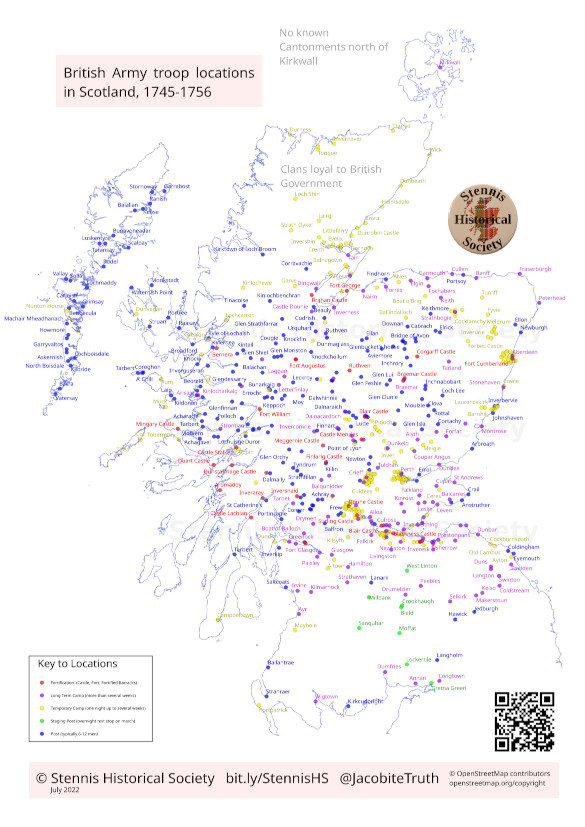British Army Occupation of Scotland
The British Army’s occupation of Scotland from 1745 to 1756 occurred primarily in the aftermath of the Jacobite Risings, specifically after the Battle of Culloden in 1746. The Jacobite Risings were a series of rebellions, uprisings, and wars in Britain and Ireland occurring between 1688 and 1746, aimed at returning James VII, and later his descendants, to the throne after they were deposed by Parliament.
Post Culloden, the British government initiated policies and measures to integrate Scotland more fully into the Kingdom of Great Britain and to diminish the power of the clans. The British Army maintained a presence to suppress any potential Jacobite sympathies and to enforce new laws, such as the Disarming Act, which aimed to prevent future rebellions by prohibiting the bearing of arms by the Highland clans, and the Dress Act, which banned the wearing of traditional Scottish Highland dress.
The occupation was characterized by strict enforcement of these laws, the construction of military roads and forts to control movement and facilitate rapid military response, and efforts to undermine traditional Gaelic culture and the clan system. The British Army’s presence and the government’s punitive and assimilative policies during this time led to significant social, cultural, and economic changes in the Scottish Highlands.
This event is also available in the following timelines:
